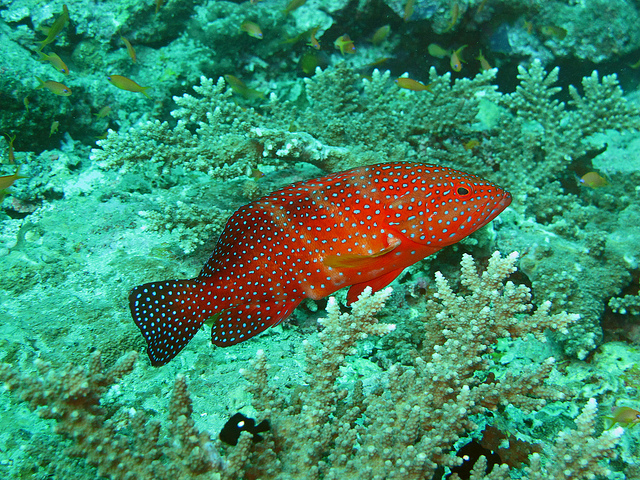Slinking across the reef, the coralgrouper shimmies its body and from out of nowhere, a giant moray eel slithers into a crevice to snare the prey and share in the hunt. This unusual scenario actually happens more than you think, says one team of researchers.
This unlikely partnership goes beyond inter-species hunting parties. The researchers also discovered the first instance of a specific sign language used in fish where on hunter alerts a partner to an object of mutual interest.
The team documented this unique relationship between the coralgrouper (Plectropomus pessuliferus marisrubri), the giant moray eel. (Gymnothorax javanicus) and the Napoleon wrasse (Chelinus undulatus) shows that by cooperating, the three species improve their chances of a tasty meal by working together.
The grouper can use speed bursts in the open water to catch prey, the eel can slide into holes and crevices where small fish hide and the wrasse has powerful extendable jaws that can actually suck out prey from a hole or smash the reef around it to get to the target.
As the main communicator of the bunch, the grouper has two signals it uses. First off is what is described as a “high frequency shimmy” or Harlem Shake of its body to signal “game on” and join in the chase. The second is a headstand where the grouper literally points its head down and tail up to show the eel or wrasse where the prey is hiding or where it was last seen.
This discovery was recently uncovered and documented by a team of researchers studying reefs off Australia and Egypt. The team reported its findings this week in the journal Nature Communications.
The team had nearly 200 hours of observation in the wild, noting groupers performing the headstand 34 times. Out of that, they observed an eel or wrasse rushing in 31 times and a successful capture in five cases.
[Image via Tim Proffitt-White]



